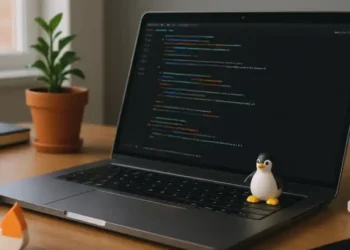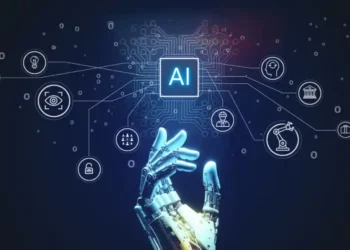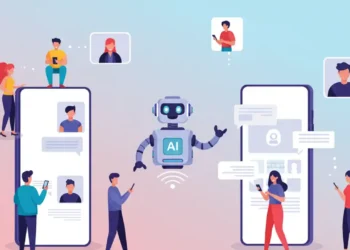So, you’ve been hearing all about AI from ChatGPT to self-driving cars and now you’re wondering, “Artificial Intelligence Roadmap” Trust me, you’re not alone. Diving into the world of Artificial Intelligence (AI) can feel overwhelming at first, like trying to learn a new language without knowing the alphabet. But here’s the good news: you don’t need to be a genius or a coding wizard to start your AI journey.
Whether you’re a student, a working professional looking to pivot, or just a curious mind, this guide will give you a clear and friendly roadmap. We’ll break it down into real, manageable steps no jargon, no overwhelming tech talk. Think of this as your personal tour guide into the world of AI.
You’ll learn how to build foundational knowledge, pick the right tools, and even land your first project. By the end of this post, you’ll have a realistic plan you can follow with confidence. Let’s get started, shall we?
1. Understand What AI Really Is (And What It Isn’t)
First things first let’s clear up some myths. Artificial Intelligence isn’t magic, and it’s not going to take over the world tomorrow. It’s just a branch of computer science focused on building machines that can “think” or make decisions like humans.
You might feel like AI is reserved for PhDs or Silicon Valley pros, but honestly? Anyone can understand it with the right guidance. AI covers areas like:
Machine Learning (ML)
Natural Language Processing (like Siri or ChatGPT)
Computer Vision (think facial recognition)
For example, one thing I tried early on was watching simple YouTube videos explaining how AI powers Google Maps or Netflix recommendations. That helped me connect the dots in real life.
Friendly Tip: Don’t jump into coding just yet. Spend a week just reading and watching basic AI explainers. Get familiar with the concepts first.
2. Build a Solid Foundation in Math (But Don’t Panic!)
Yes, AI involves math but before you run for the hills, hear me out. You don’t need to master calculus overnight. The key areas to focus on are:
Linear Algebra
Probability & Statistics
Basic Calculus
For example, when I was learning, I found a free Khan Academy course on probability that actually made it kind of fun (never thought I’d say that). I’d do just 20 minutes a day while sipping coffee.
Friendly Tip: Use real-world examples to make sense of the math. Understanding how Netflix recommends shows based on user data makes statistics way more relatable.
Read More: 10 Best Websites About Technology to Stay Updated in 2025
3. Learn a Programming Language (Start with Python)
Python is hands-down the most popular language in AI and for good reason. It’s beginner-friendly and has tons of libraries like TensorFlow, Keras, and Scikit-learn that make AI work easier.
One thing I tried: I built a simple chatbot using Python in a weekend tutorial. It was messy, but I actually saw AI in action and that gave me a huge confidence boost.
Friendly Tip: Start small. Learn basic Python syntax first (if, loops, functions), then slowly work your way up to AI-specific stuff.
4. Take an Introductory AI or Machine Learning Course
Now that you’ve got the basics, it’s time to level up. There are amazing free (and paid) courses out there that will walk you through AI step-by-step.
Some great beginner-friendly courses:
Coursera – Andrew Ng’s ML Course
Google AI’s Learning Path
fast.ai – Practical deep learning for coders
For example, when I took Andrew Ng’s course, I didn’t understand everything the first time and that’s okay. I rewatched videos and took notes like I was back in college.
Friendly Tip: Don’t aim for perfection. Aim for progress.
5. Start a Simple AI Project (Practice > Theory)
You learn best by doing. Start with tiny, bite-sized projects like:
Spam detector
Movie recommendation system
Chatbot using your favorite quotes
For instance, I made a cat vs. dog image classifier using TensorFlow just by following a step-by-step guide. It wasn’t perfect, but it felt so cool to see the model guess images!
Friendly Tip: Post your project on GitHub. It builds your portfolio and shows progress.
6. Explore AI Tools and Frameworks
Once you’re comfortable with basic coding, it’s time to get hands-on with tools that make AI easier:
TensorFlow – Great for building ML models
Scikit-learn – For traditional ML tasks
Keras – High-level API for neural networks
Google Colab – Free notebooks to run Python code online
Try experimenting with a few. For example, I started with Google Colab since I didn’t want to install heavy software. It’s free and works right in your browser.
Friendly Tip: Don’t try to master all tools. Focus on one at a time.
7. Stay Updated with AI Trends and News
AI evolves fast. Like, really fast. One of the best ways to stay in the loop is to follow AI blogs, YouTube channels, and newsletters.
Some I love:
Towards Data Science (Medium)
Lex Fridman Podcast
AI newsletters like The Batch by Andrew Ng
Set a goal to read/watch one piece of content daily. Even a 5-minute video can teach you something new.
8. Join an AI Community or Study Group
Learning alone can feel… lonely. Joining a community gives you a support system and accountability.
You might consider:
Reddit’s r/MachineLearning
Discord AI study groups
Local or virtual AI meetups
For example, I joined a Discord group of beginners and having weekly challenges really helped me stay on track.
Friendly Tip: Don’t be afraid to ask questions. Everyone starts somewhere.
9. Apply for Internships or Freelance Projects
Once you’ve built a few projects and feel confident, try applying for internships or small freelance gigs. Even unpaid ones can give you real experience and help build your resume.
Websites like Upwork or Internshala often have beginner-level AI or data science gigs.
Friendly Tip: Include your GitHub and any courses in your resume. Real projects stand out more than just certificates.
10. Create a Long-Term Learning Plan
AI is a marathon, not a sprint. Set goals like:
Build 3 AI projects in 6 months
Complete 1 major course every 2 months
Start a blog documenting your journey
Write your plan down. Revisit it monthly. And don’t forget to celebrate progress!
Conclusion: Artificial Intelligence Roadmap
Starting your Artificial Intelligence Roadmap journey might feel like a mountain right now but take it one step at a time and you’ll be amazed at how far you can go. You don’t need to be perfect; you just need to be consistent.
Everyone starts as a beginner. What matters is that you start. Believe in your ability to learn, grow, and thrive in this space. The future is AI and you’re ready to be a part of it.
FAQs
Can I learn Artificial Intelligence roadmap without a tech background?
Absolutely! Many people from non-tech backgrounds start learning AI through beginner-friendly courses. Focus on building your foundation slowly — start with Python, basic math, and free online resources. The key is consistency.
How long does it take to become good at AI?
It depends, but most people see solid progress in 6–12 months with consistent learning. Start with small projects and courses, then build your skills over time. Think long-term, not overnight success.
What is the best language for learning AI?
Python is the most popular and beginner-friendly language for AI. It has great libraries and tons of tutorials. Start with Python basics, then move into machine learning and deep learning libraries.
















Discussion about this post